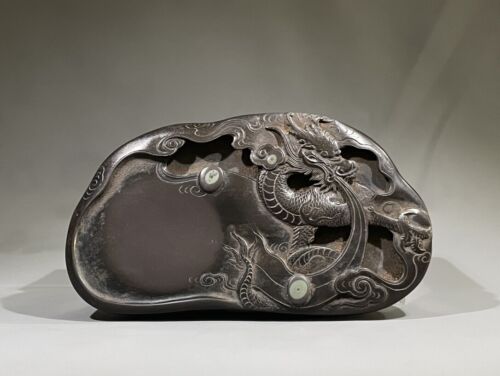For this week’s class we discussed inkstones, ancient Chinese text binding, stamps, etc. I found all of this not in my area of interest, though our discussions of inkstones were what intrigued me most. A question posed in class was why Prof. Ko insisted on “trying her hand at the processes and creating the objects she researches.” It was interesting to me because there are some processes and methods (in creating textiles, dyes, tools, etc.) that we have lost knowledge of. And in attempting to recreate such objects and go through the motions of such processes, it is a view into a world that connects us to the past. Cheesy as it is to say, but often domestic objects are overlooked in the conversation of history. People are more interested in warfare and socio-political strife, and while these are extremely important in the conversation of history, domesticity (arts, entertainment, daily life) is often left to the way-side in the status of importance. Its relevance is often downplayed tremendously, though the everyday objects that people use (in the present and past) are the small building blocks that construct our history. Something as small as the inkstone– how people manufactured them and how they used them–may seem small and insignificant. But going through the process of understanding it more intimate detail gives us greater insight into the lives of ancient Chinese people. And as historians, are number one job is to build upon our abilities to comprehend and understand past peoples in their entirety. By ignoring small details such as the inkstone, we deprive past peoples of their entire personhood.
I also greatly enjoyed the small discussion of dragons and the differentiation between them. We discussed how the number of claws indicated the status of the wearer. Only the emperor could wear the dragon with five claws, four-clawed dragons represented princes, and commoners wore three-clawed dragons. It’s interesting to see how so much care went into the representation of these creatures– and shows how the arts should play a more prevalent role when discussing history. Without literacy in art, small indications of social dynamics and ancient Chinese social hierarchy would not have been uncovered. Yet these nuances in art make me wonder what else we as historians have missed. There is the obvious language barrier as well as the barrier which comes with cultural understanding, and then the barrier that comes with the time difference. There may be other symbols that we could be missing when it comes to understanding art in the context of the society we are researching.
I also enjoyed drawing the inkstone with the dragon (did you know that my last name Drake means dragon?) Getting a personal understanding of the inkstone through art was a new way of engaging with class material that I found fun. Looking at the different drawings was also entertaining. Seeing the small designs at the top of the inkstones gave them each their own personality and an insight into the users’ character (and I couldn’t help but draw parallels into how we in the present day may personalize computers, iPads, iPhones with stickers/widgets/etc.) Personalization seems to be a trait common in both ancient and modern peoples which I find a wholesome quirk of the human species.
McDermott, Joseph Peter. A Social History of the Chinese Book : Books and Literati Culture in Late Imperial China. Understanding China. Hong Kong: Hong Kong University Press, 2006. (ebook Trexler)
McDermott, Joseph Peter. A Social History of the Chinese Book : Books and Literati Culture in Late Imperial China. Understanding China. Hong Kong: Hong Kong University Press, 2006. (ebook Trexler)
